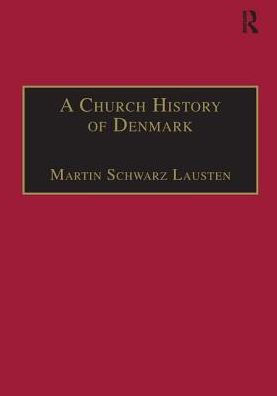A Church History of Denmark
The assertion written on the Great Stone of Jelling is that it was Harold (Bluetooth) who converted the Danes to Christianity in c.965. In this comprehensive survey, Martin Schwarz Lausten charts the fortunes of the church in Denmark from its very beginnings to the present day. Starting with the pagan society of the Vikings, Lausten describes how the Danes were introduced to the new religion prior to Harald's enthronement through their contact with Christian traders and missionaries, and in the encounters of the Viking raiders with Christian culture in France and England. Drawing on a wealth of manuscript, printed and pictorial sources, the book details how Church and Royal power transformed an ancient peasant society into a typical medieval state. Following chapters examine the impact of Luther and the Reformation on Danish society, and the shift in the struggles for authority between the Church and the State. The influence of the Humanist movement and the European Enlightenment are also examined in full, together with the issues they raised such as how the Church was to speak to the modern man who no longer took at face value the authority of the Bible. Lausten brings his survey right up to current times with an overview of the nineteenth-century revivalist movements, the Danish Church's response to the Jewish question during the German occupation, through to the present day establishment of the People's Church.
"1123584298"
A Church History of Denmark
The assertion written on the Great Stone of Jelling is that it was Harold (Bluetooth) who converted the Danes to Christianity in c.965. In this comprehensive survey, Martin Schwarz Lausten charts the fortunes of the church in Denmark from its very beginnings to the present day. Starting with the pagan society of the Vikings, Lausten describes how the Danes were introduced to the new religion prior to Harald's enthronement through their contact with Christian traders and missionaries, and in the encounters of the Viking raiders with Christian culture in France and England. Drawing on a wealth of manuscript, printed and pictorial sources, the book details how Church and Royal power transformed an ancient peasant society into a typical medieval state. Following chapters examine the impact of Luther and the Reformation on Danish society, and the shift in the struggles for authority between the Church and the State. The influence of the Humanist movement and the European Enlightenment are also examined in full, together with the issues they raised such as how the Church was to speak to the modern man who no longer took at face value the authority of the Bible. Lausten brings his survey right up to current times with an overview of the nineteenth-century revivalist movements, the Danish Church's response to the Jewish question during the German occupation, through to the present day establishment of the People's Church.
180.0
Out Of Stock
5
1

A Church History of Denmark
344
A Church History of Denmark
344Related collections and offers
180.0
Out Of Stock

Product Details
| ISBN-13: | 9780754603078 |
|---|---|
| Publisher: | Taylor & Francis |
| Publication date: | 07/23/2002 |
| Pages: | 344 |
| Product dimensions: | 6.00(w) x 8.62(h) x (d) |
From the B&N Reads Blog
